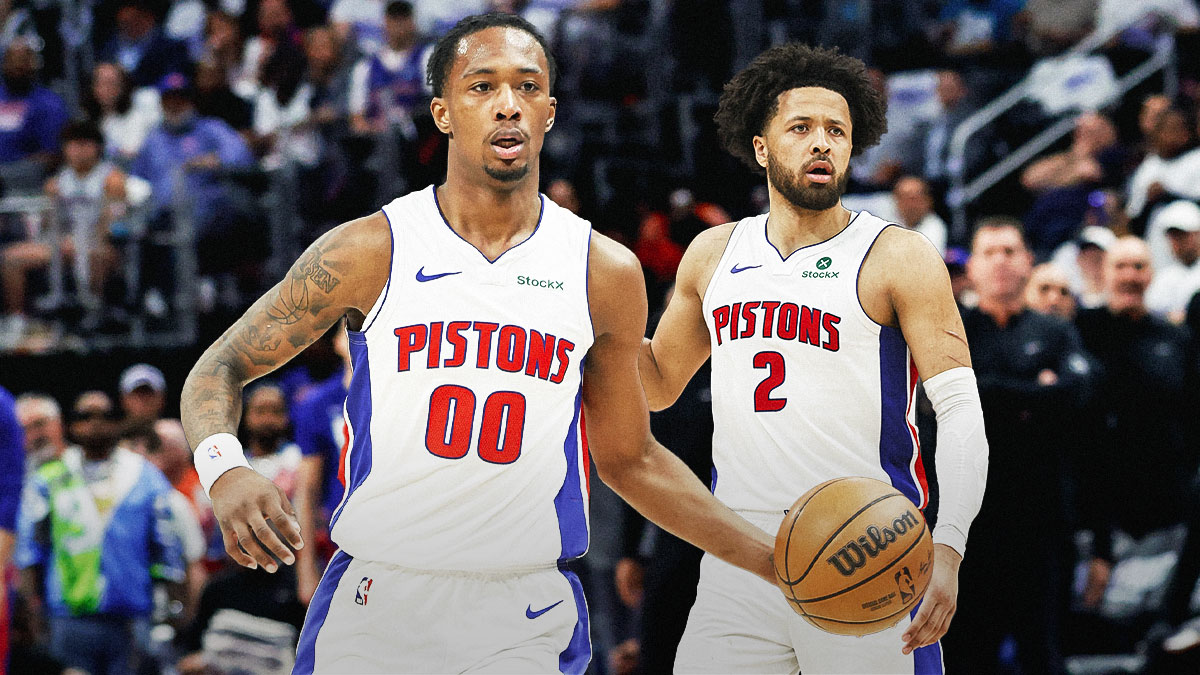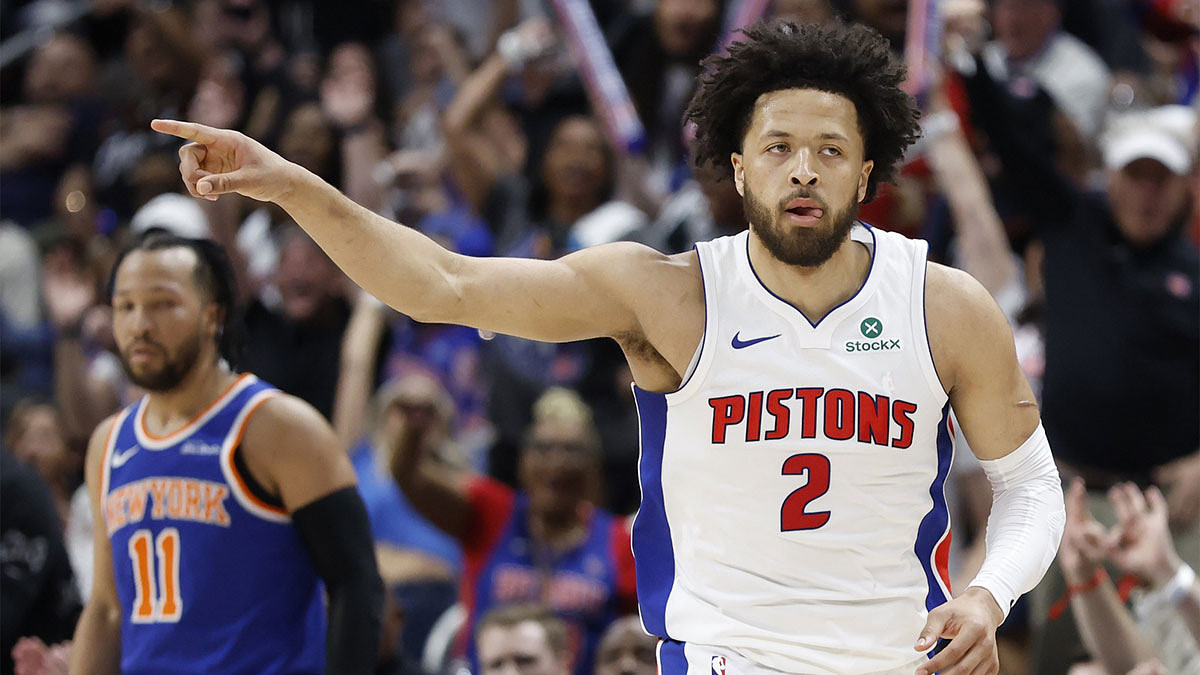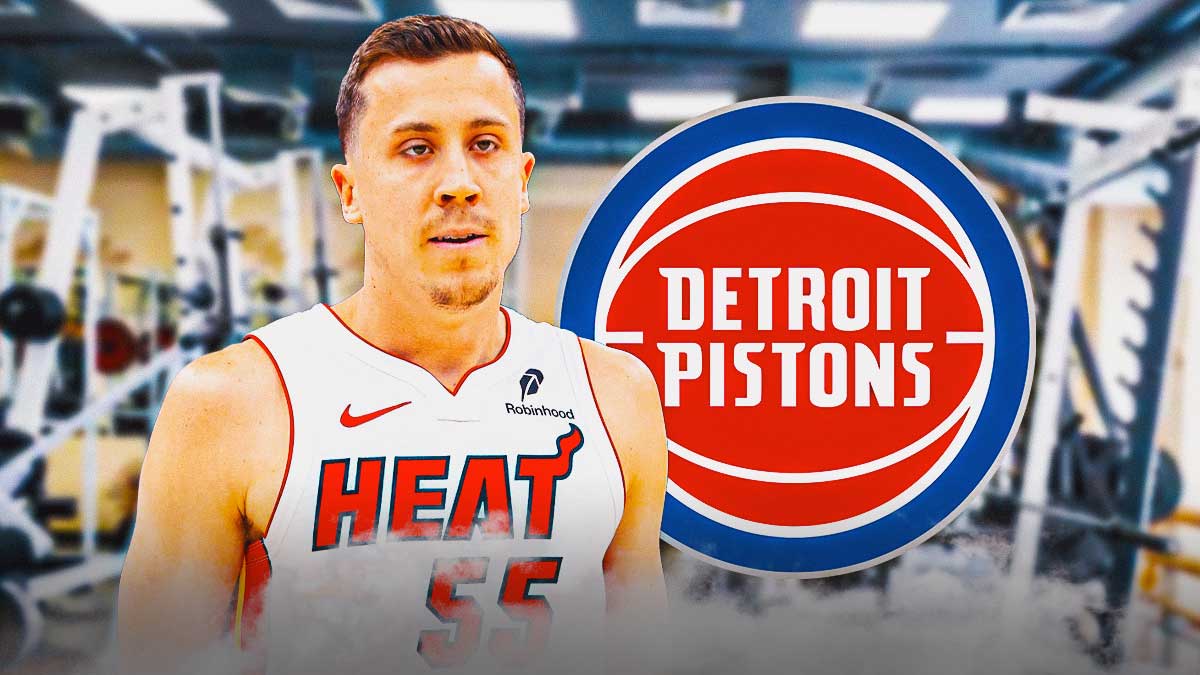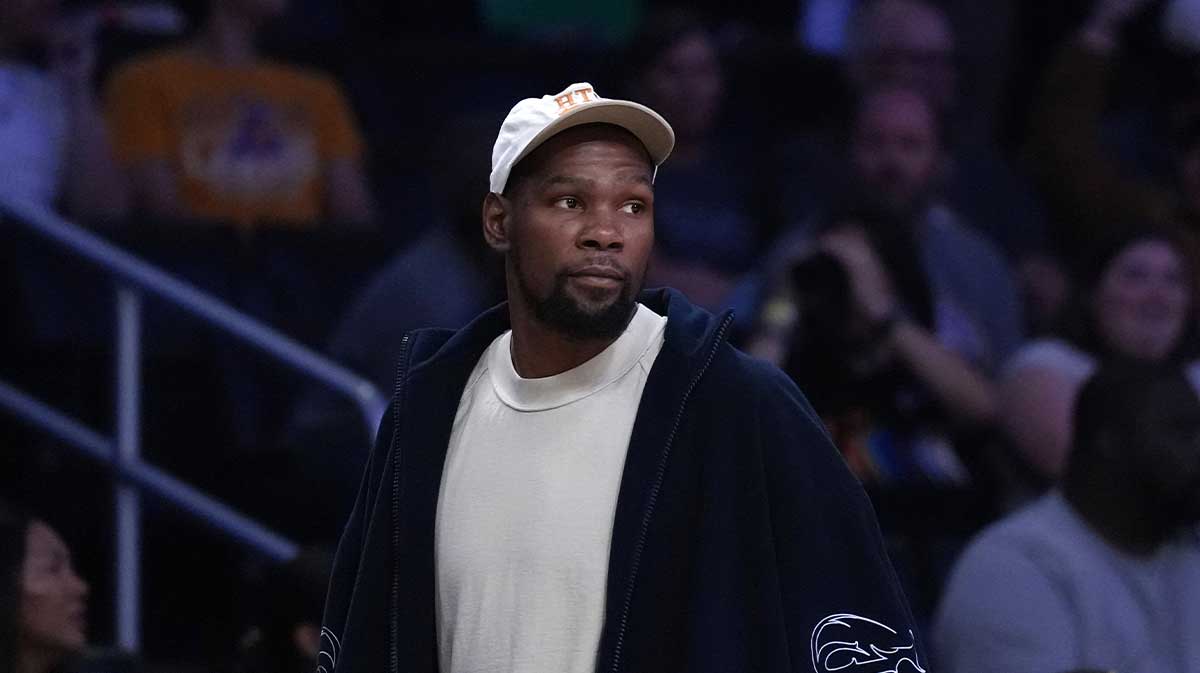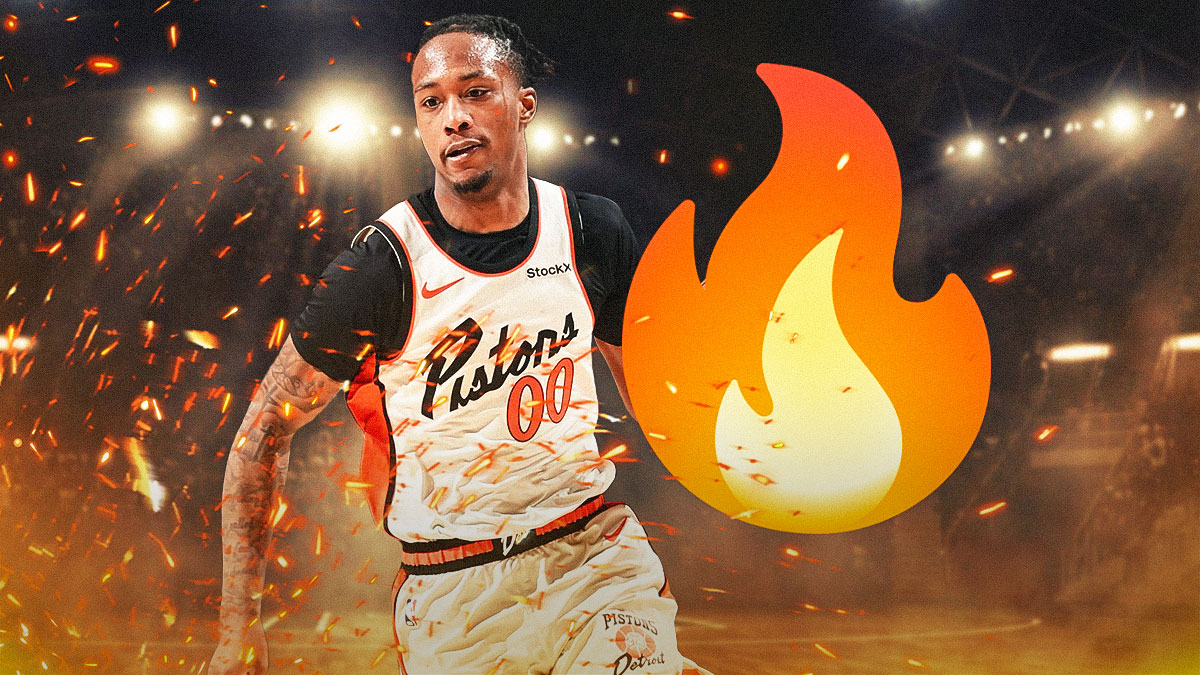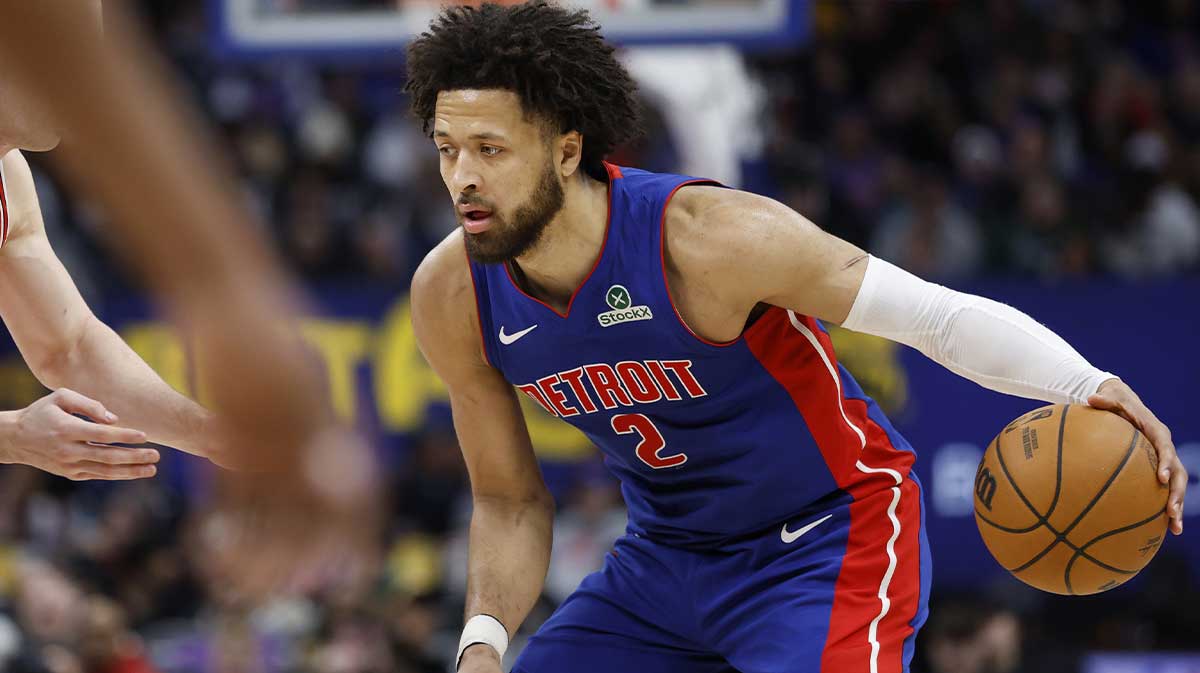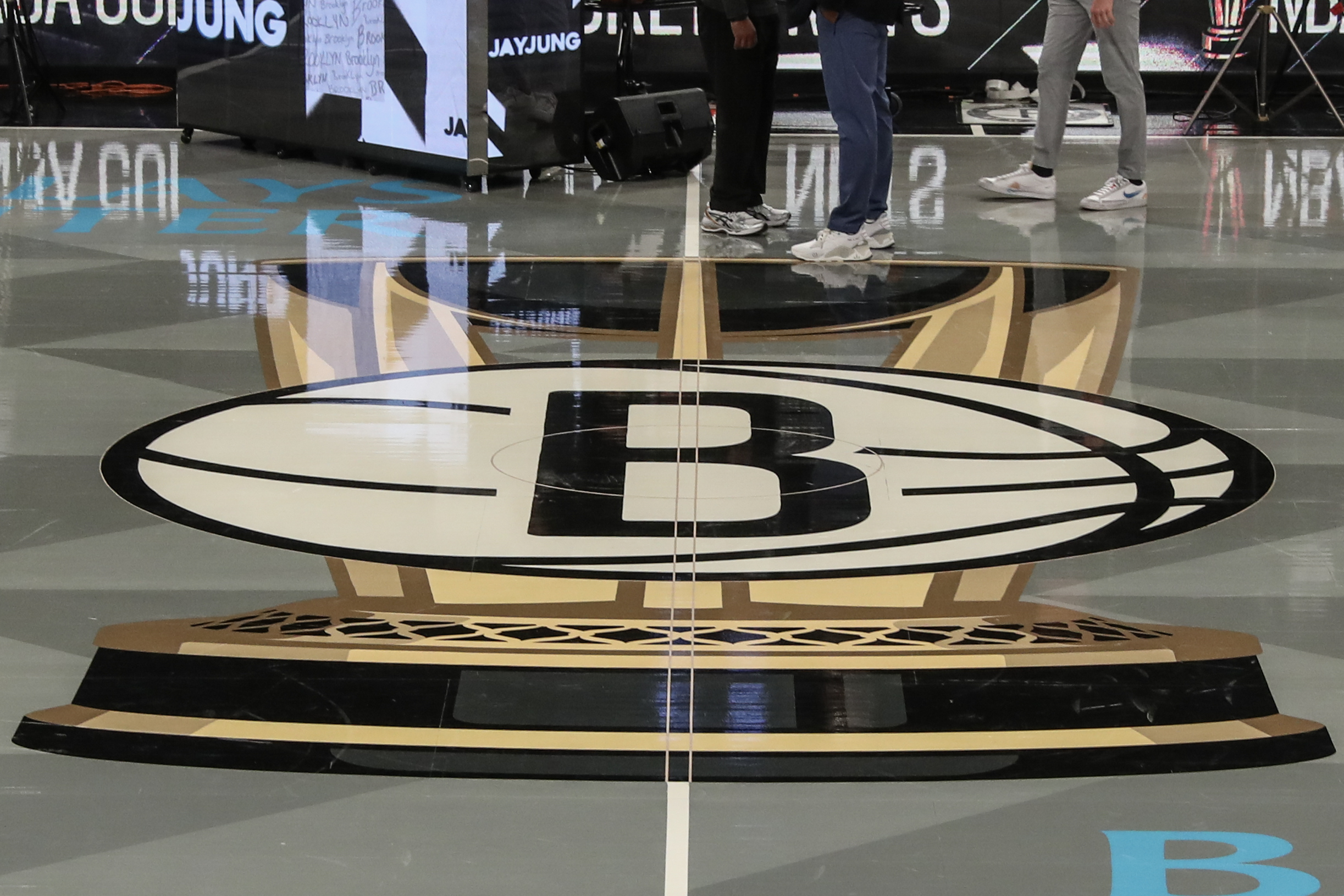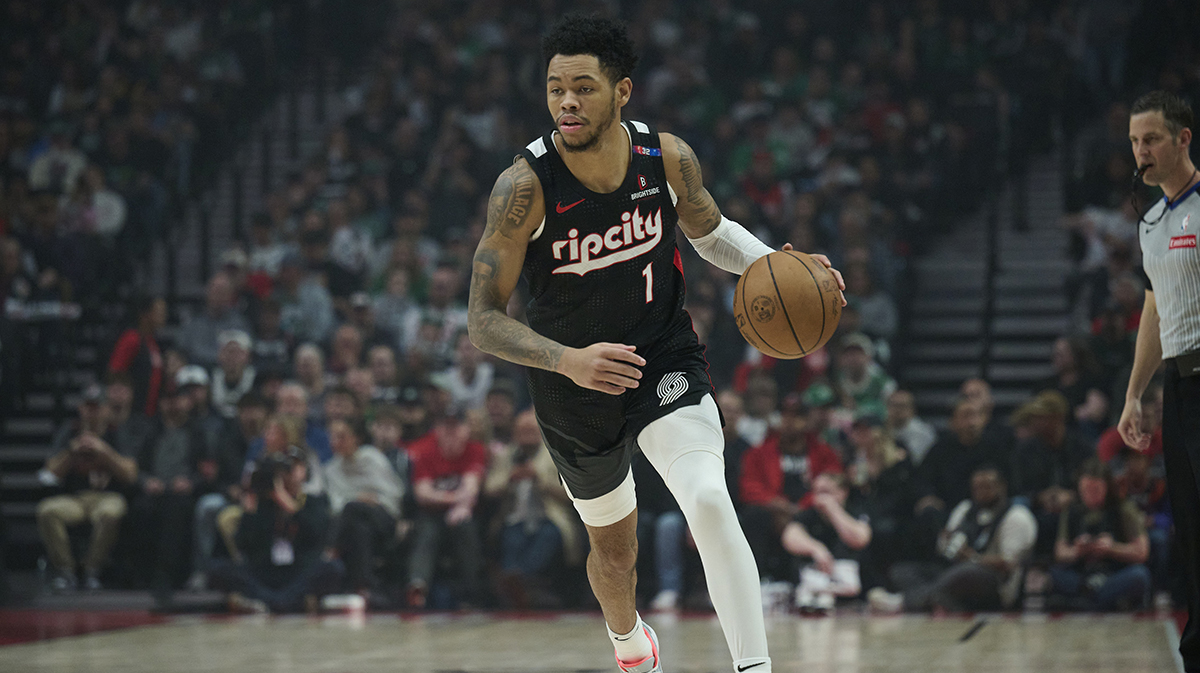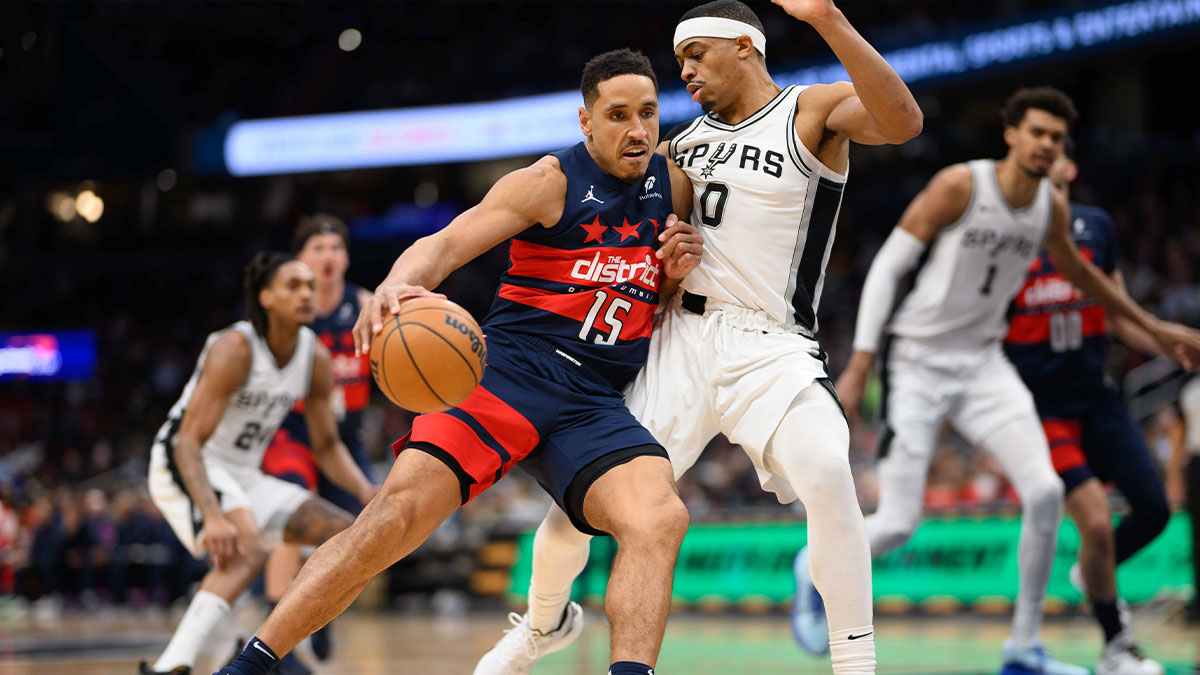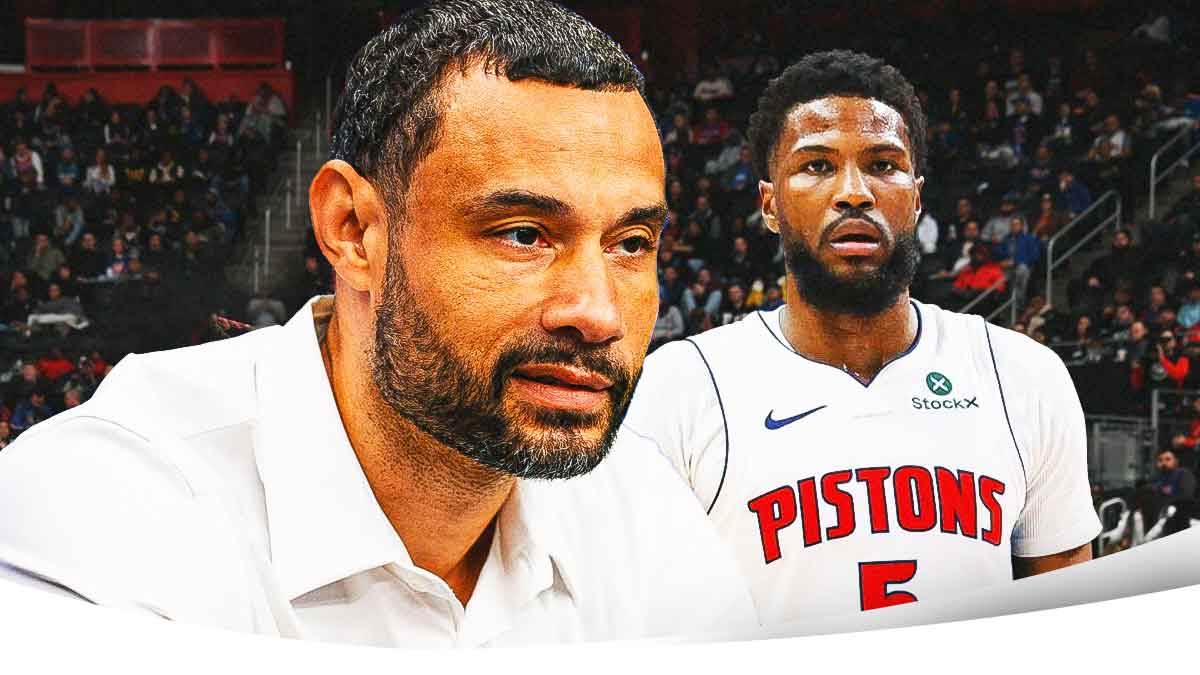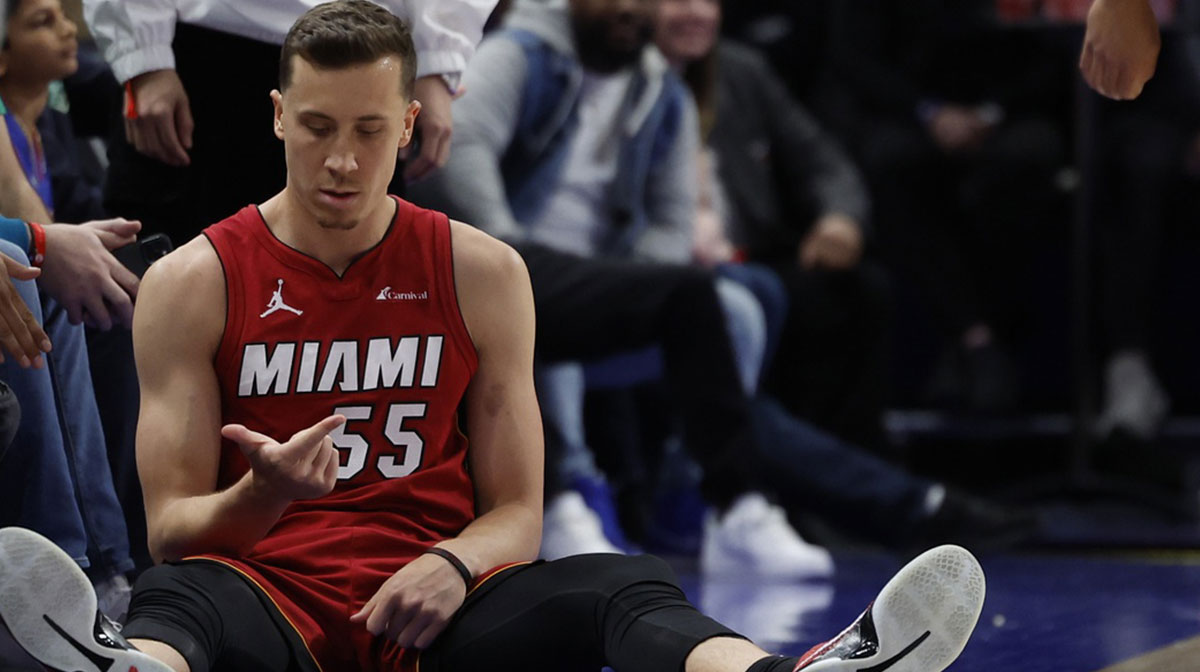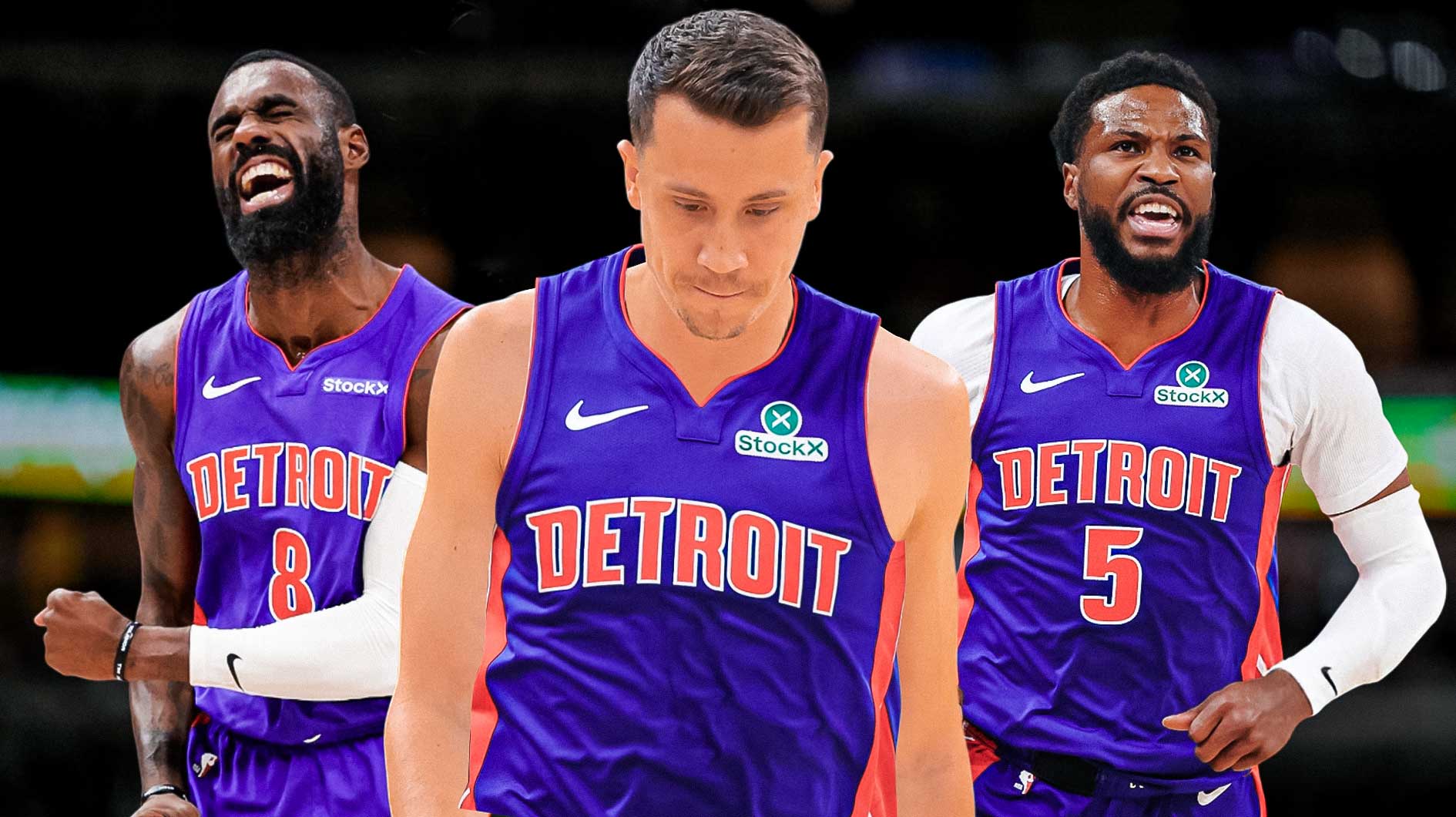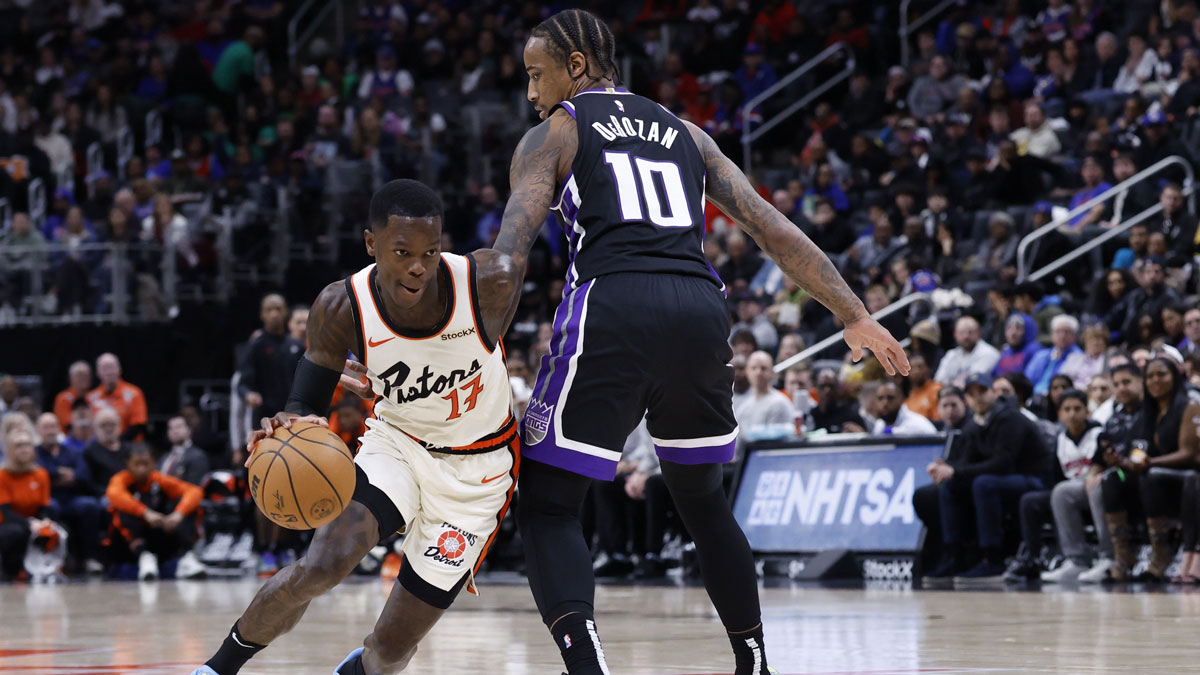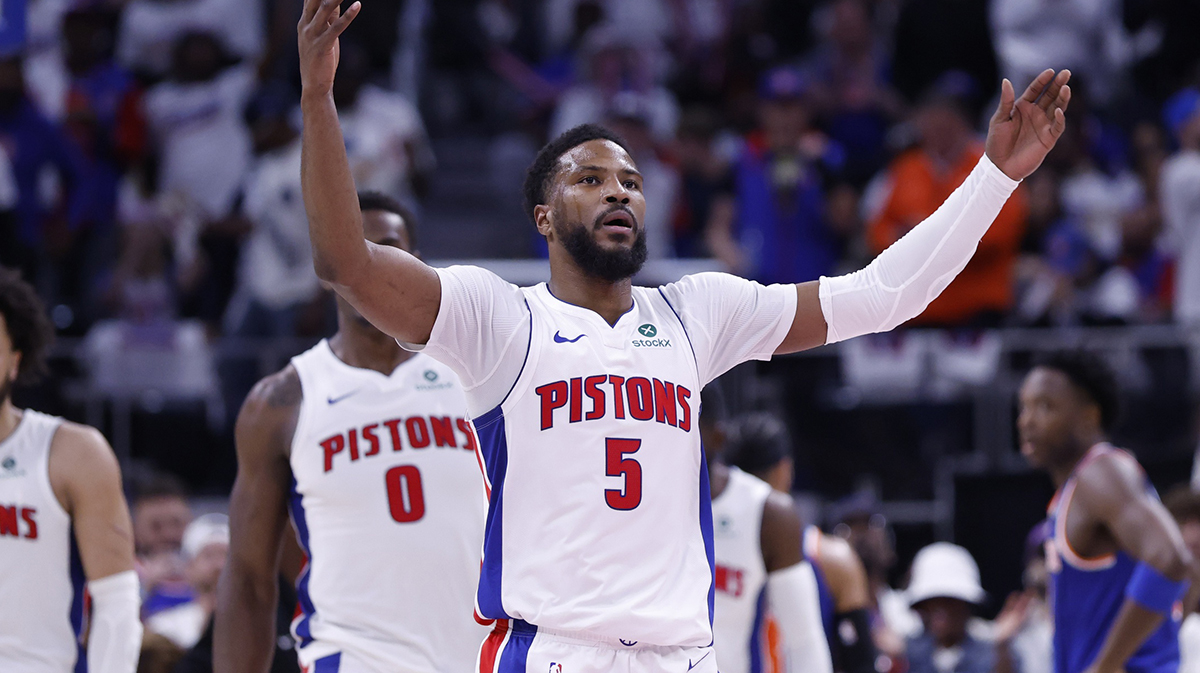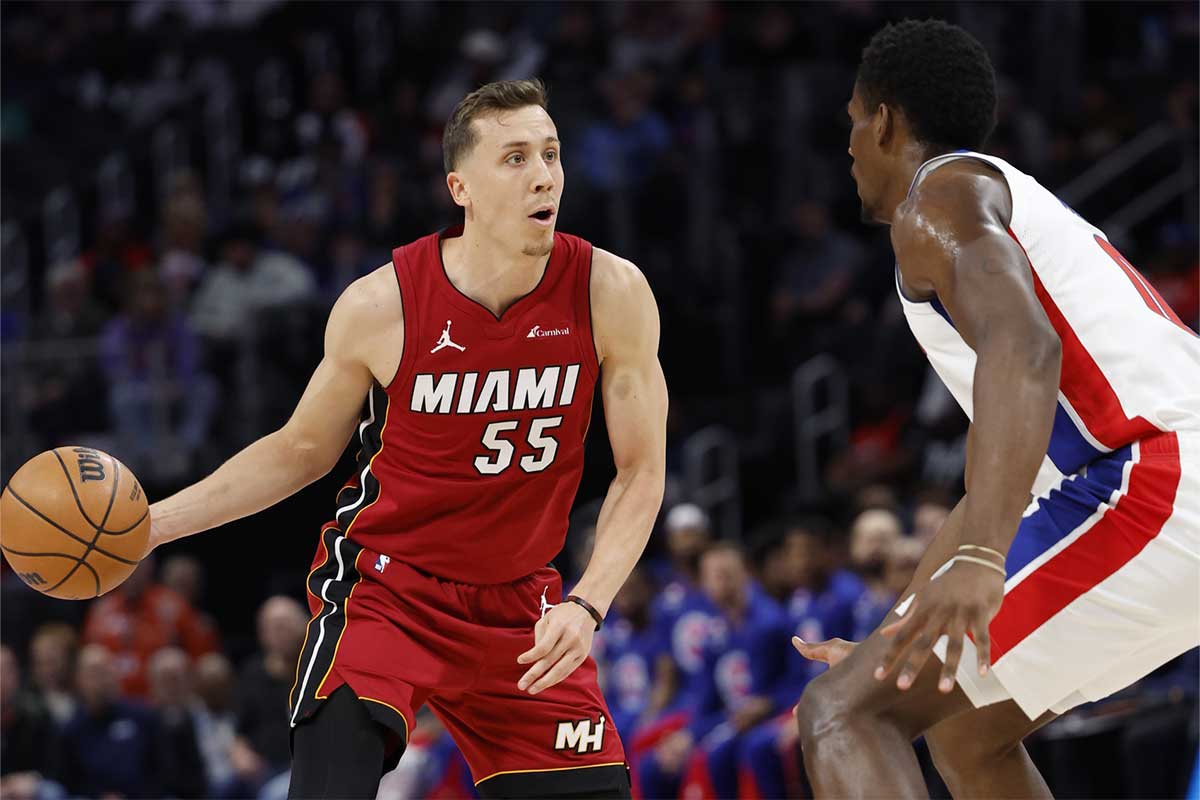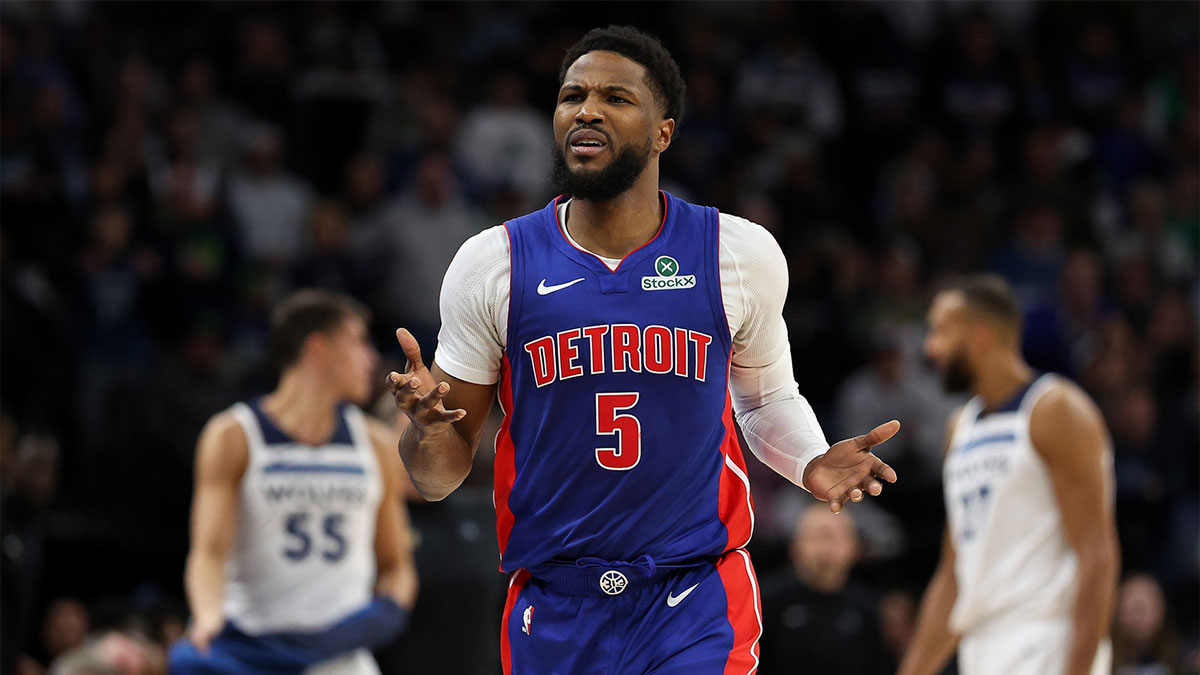The Detroit Pistons find themselves in dire straits heading into the 2018 offseason. Despite trading for Blake Griffin in January, the Pistons still finished under .500 and missed the playoffs for the eighth time in the past nine seasons. and haven't won a single playoff game since the 2007-08 season.
After the Pistons' disappointing finish to the 2017-18 campaign, team owner Tom Gores met with head coach/team president Stan Van Gundy to discuss potential organizational changes, according to ESPN.com's Adrian Wojnarowski. Van Gundy pushed back against Gores' proposed restructuring, which led to his dismissal in early May.
The Pistons hired longtime NBA executive Ed Stefanski as a senior adviser to Gores, in part to help “reshape the team's basketball operations infrastructure and strategy,” according to a press release from the team. Following his hiring, Stefanski told Vince Ellis of the Detroit Free Press that the Pistons don't have “a lot of room from a free-agency standpoint this summer,” but he took a more optimistic tone about the current roster, saying they “have three high-level players in Reggie Jackson, in Andre Drummond and in Blake Griffin, so that's a good start.”
Given the amount of organizational overhaul the Pistons have undergone over the past few weeks, their offseason road map begins with determining their overarching strategy moving forward. From there, they can set about getting back into postseason contention.
5. What is their organizational direction?

There's a common denominator among successful NBA teams: alignment from the owner down through the front office and the head coach.
As the Pistons begin their search for a new team president and head coach, Gores and Stefanski must first settle upon an organizational direction.
While every owner claims to prioritize championship contention above all else, that isn't always the case. Is a 45-win season and a playoff berth enough to be considered a success so long as it boosts attendance? What about a 50-win season and a second-round exit? Or is it championship-or-bust for the Pistons, no matter how many years it may take?
Once Gores figures out which approach to take, he can begin to survey front office and coaching candidates to accomplish that goal.
According to Wojnarowski, the Pistons plan to separate the “powers of basketball operations and the coaching staff,” both of which Van Gundy oversaw for the past four seasons. The team has already met with Brooklyn Nets assistant general manager Trajan Langdon to discuss a “high-level role” in the front office, and he “will remain a serious candidate” for the time being.
With the team mired in salary-cap hell, whoever takes over the Pistons' basketball operations will have a number of difficult decisions to make in the years to come. Can the core of Drummond, Griffin and Jackson serve as the foundation of Detroit's organizational strategy? Would the Pistons be better off blowing apart that group and rebuilding around one of the three?
Until the team has philosophical alignment from Gores down to the front office and coach, it will have little chance of returning to its mid-2000s heights.
4. Who should they hire as head coach?

The decision of who the Pistons should hire to replace Van Gundy as head coach again comes down to Gores' organizational vision.
If he chooses the win-now route, an experienced head coach with a lengthy postseason resume would make more sense than a neophyte. If he's willing to stomach a lengthy rebuild, a younger coach with a background in player development would be preferable to an older coach who will lean heavily on veterans to scrounge together a few more regular-season wins each year.
As of now, Detroit's “top target” in its coaching search is former Toronto Raptors head coach Dwane Casey, according to Wojnarowski. Stefanski served as the Raptors' executive vice president of basketball operations for the first two years of Casey's tenure in Toronto, and Casey just guided the Raptors to a franchise-best 59-win season before getting the ax.
The Pistons reportedly prefer to hire a new leader of the front office before choosing a new head coach, according to Ellis, which would be wise. If Detroit hired Casey prior to bringing on a new team president, it could set the stage for conflict down the line. Top-down organizational alignment is paramount in this decision, even if it means waiting a few more weeks before hiring a head coach.
The willingness Casey demonstrated to modify his offensive scheme this past year should bode well for his chances of landing the Detroit job, but it still may take a few weeks for this vacancy to be filled either way.
3. How viable is the Drummond-Griffin pairing?

Once the Pistons have a new lead front office executive and head coach in place, they can then turn their attention to the existing roster. Since they don't have a first-round pick in this year's draft as a result of the Griffin trade, their biggest question heading into July 1 will be whether the Drummond-Griffin pairing is viable long term.
The two big men shared the court for 594 minutes following Griffin's arrival in Detroit, outscoring opponents by 3.0 points per 100 possessions in that time. During the games in which the two bigs played alongside one another, Griffin averaged 19.8 points, 6.6 rebounds, 6.2 assists and 1.9 triples in 33.2 minutes, while Drummond racked up 14.8 points, a whopping 17.0 rebounds, 2.2 blocks, 1.5 assists and 1.5 steals in 33.8 minutes per night.
Prior to Griffin's arrival, Drummond was in the midst of a breakout campaign in two notable areas: free-throw shooting and passing. Griffin's arrival had no effect on his shooting percentage at the charity stripe (as expected), but Drummond took a back seat in terms of his playmaking once Griffin joined the squad.
In Drummond's first 47 games sans Griffin, he dishes out 3.9 assists and 7.0 potential assists in 33.2 minutes per game, a marked increase from the 0.7 helpers he averaged across his first five seasons. In his 25 games alongside Griffin, Drummond had only 1.5 assists and 2.9 potential assists in 33.8 minutes per night.
Griffin has long been one of the best-passing big men in the NBA, so the Pistons understandably ran much of their offense through him, particularly in the absence of Jackson. But to maximize the Griffin-Drummond tandem, whoever Detroit hires as its new head coach must figure out how to keep Drummond involved as a passer and playmaker as well.
There's also the question as to whether Griffin and Drummond would benefit from staggered minutes. During the 192 minutes Griffin played alongside Anthony Tolliver, the Pistons averaged 112.5 points per 100 possessions, a shade ahead of the Golden State Warriors' league-leading mark (112.3). Detroit was also slightly more potent offensively with Tolliver paired with Drummond (106.5 points per 100 possessions) compared to Griffin (105.8).
Tolliver is an unrestricted free agent this summer, but the Pistons still have Jon Leuer and Henry Ellenson signed through 2019-20. Figuring out how best to utilize Drummond and Griffin will be the top priority of whoever the Pistons hire to replace Van Gundy as head coach.
2. Is Stanley Johnson worth extending?

Three years into his NBA career, Stanley Johnson has yet to take off in the way Detroit expected him to when it selected him eighth overall in the 2015 draft.
After coming off the bench for all but seven games in his first two seasons, Johnson started 50 of his 69 games this year. The Arizona product averaged a career-high 8.7 points to go with 3.7 rebounds, 1.6 assists and 1.4 steals in 27.4 minutes, but he shot below 38 percent overall for the third straight season and a career-worst 28.6 percent from three-point range.
Johnson has yet to finish with a player efficiency rating above 9.0—the league average is 15—and his underwhelming true shooting percentage of 48.0 this past season was also a career high. While he's a rangy, versatile defender capable of guarding multiple positions, he'll remain a net negative until his offensive game catches up with his defensive skill set.
The Pistons have the opportunity to offer Johnson an extension beginning July 1, although both sides may prefer to see how he fares in 2018-19 before putting pen to paper.
From Johnson's perspective, Detroit figures to lowball him based on his production to date, so a prove-it season where he erupts should help him earn a heftier deal as a restricted free agent next summer. The Pistons, meanwhile, already have $101.8 million in guaranteed salary on their books for 2019-20, so a Johnson extension would push them past the projected $108 million salary cap for that season.
Unless Johnson wants to lock in long-term security at a discount price this summer, expect both he and the Pistons to punt on an extension for the time being.
1. What can they do make themselves into a legitimate contender?

With no first-round pick and nearly $112 million in guaranteed salary heading into next season, the Pistons don't have many obvious avenues for improvement this offseason.
If they don't waive Reggie Bullock, Eric Moreland and Dwight Buycks, all of whom have non-guaranteed 2018-19 contracts at least through the first week of July (if not longer), they'll have $117.9 million in salary on their books. That leaves them roughly $5.1 million shy of the projected $123 million luxury-tax line without making any trades or free-agent signings.
The Pistons have the roughly $8.5 million non-taxpayer mid-level exception at their disposal this offseason, as well as a $7 million trade exception until late January. It's difficult to imagine Gores would be willing to dip into the luxury tax for a team with little chance of contending for a championship next season, so Detroit may be limited to spending only $5 million in free agency unless it offloads some salary via trades or by waiving Bullock, Moreland or Buycks.
Before making any drastic moves, the Pistons figure to bring in a new front office and head coach and allow them to try their hand with the core of this roster.
Jackson, Drummond and Griffin played only 44 minutes alongside one another last season, but they outscored opponents by a whopping 13.7 points per 100 possessions in that limited time. Unless a team bowls them over with a godfather offer for one of those three—spoiler alert: that isn't happening—the Pistons likely will go into the 2018-19 season to see whether that trio can be the backbone of a championship contender.
Detroit could seek to retain Tolliver in free agency, but otherwise, it will round out its roster either with its trade exception or the portion of its mid-level exception that won't plunge it into luxury-tax territory. That won't be enough to land a significant difference-maker, but taking a flier on someone like Mario Hezonja or Seth Curry would be a worthy gamble if they're amenable to a starting salary south of $5 million.
Van Gundy's insistence on overpaying role players such as Leuer, Langston Galloway and Ish Smith left the Pistons little flexibility moving forward. They have Drummond, Griffin and Jackson under contract through 2019-20, so they aren't under immediate pressure to make wholesale changes. However, it's fair to question whether this core is capable of winning as currently constructed.
In all likelihood, the Pistons will eventually have to sell low on at least one of Jackson, Griffin or Drummond. Given Griffin's age (29) and injury history, escaping from his enormous five-year, $171 million deal may be the most prudent play, but don't expect Detroit to blow apart its roster until the trade deadline at the earliest.

